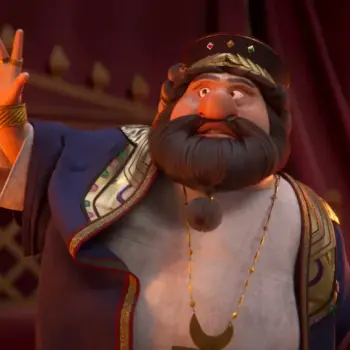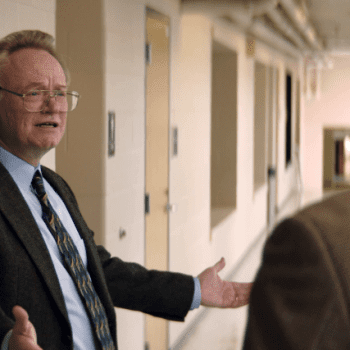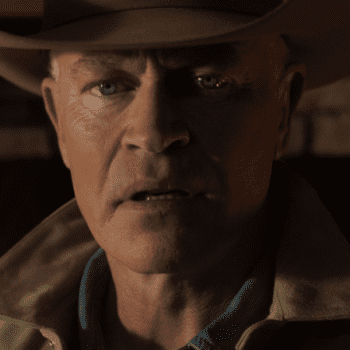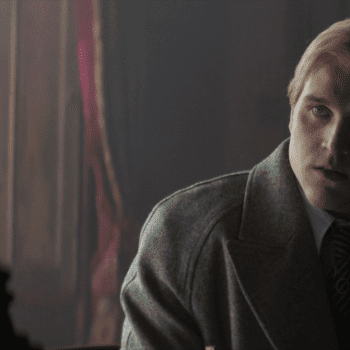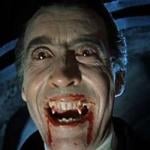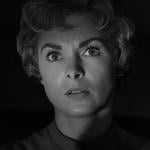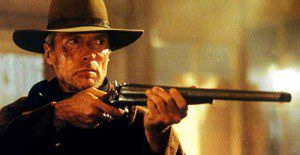 Clint Eastwood shot to big-screen fame in a series of “spaghetti westerns”, the first of which, A Fistful of Dollars (1964), was based on a Japanese samurai flick called Yojimbo (1961). Now things are coming full circle, as Variety reports that a Japanese remake of Eastwood’s final western Unforgiven (1992) is now in the works.
Clint Eastwood shot to big-screen fame in a series of “spaghetti westerns”, the first of which, A Fistful of Dollars (1964), was based on a Japanese samurai flick called Yojimbo (1961). Now things are coming full circle, as Variety reports that a Japanese remake of Eastwood’s final western Unforgiven (1992) is now in the works.
The new film will be directed by Korean-Japanese filmmaker Lee Sang-il, and will star Ken Watanabe (best known in North America for his parts in such Hollywood films as The Last Samurai, Batman Begins and Inception) as a retired samurai modeled after the Eastwood character. Watanabe, incidentally, has actually worked with Eastwood himself already, having starred in Clint’s World War II movie Letters from Iwo Jima (2006).
I must admit I’m not sure how Unforgiven will translate to this new genre, given that the original film revolved, in part, around a subversion of the Christ-figure tropes that often pop up in the western genre, whereas Japanese culture lacks the same sort of concern with Christian ideas and motifs (though individual Japanese, such as Akira Kurosawa, certainly were, and are, interested in such things).
I discussed the Christ-figure subversion of the original film in a blog post several years ago, which compared Unforgiven to Eastwood’s other Best Picture and Best Director Oscar winner Million Dollar Baby (2004):
Like a lot of westerns, Unforgiven uses a fair bit of Christ imagery, but it puts these allusions to the service of a nihilistic theme, rather than a theme of salvation. Bill Munny (Eastwood) is a former bounty hunter who left his life of killing behind when he married a decent woman; however, he’s a widower now, and he needs money, so he takes a job killing two men who beat and cut a prostitute. At one point, Munny is beaten by the sheriff’s men, and he remains unconscious for three days; his awakening is witnessed by the prostitute, and at the film’s end, Munny proves that all the legends about him were true, as he takes out the sheriff and all his men in a shoot-out that is witnessed by a storyteller who will go on to spread Munny’s vindictive gospel.
But what is the point of all that symbolized death and resurrection? When Munny wakes up, he is haunted by a nightmare he had of his wife’s rotting, worm-covered corpse; whereas Jesus, between Good Friday and Easter Sunday, descended into hell to defeat death, Munny witnesses the decomposition of the most heavenly person he has ever known. Hence, when Munny famously says that “we all have it coming,” he is not referring to meaningful judgment, as many Christian interpreters of the film have supposed, but rather, to the meaningless death that awaits us all — good or bad, it doesn’t matter, we’ll all still die.
I do think that the fatalism of Eastwood’s film could have a sort of universal or trans-cultural appeal, if that’s the word. But it remains to be seen how interested the new film will be in that theme, even: Variety reports that Watanabe’s character will be “living in retirement with his … wife” when the film begins, which is a significant change in and of itself, given how the fact that Eastwood’s wife was already dead (and rotting in the ground) cast a significant shadow over the original film.
Ah well, I’ll be curious to see how the new version turns out, in any case.



